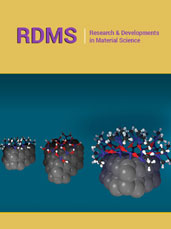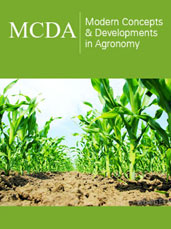- Submissions

Full Text
Clinical Research in Animal Science
Dairy Goat in Latin America
Patricio Dayenoff*
Faculty of Veterinary and Environmental Sciences, Argentina
*Corresponding author:Patricio Dayenoff, Faculty of Veterinary and Environmental Sciences, Juan Agustín Maza University, Argentina
Submission: February 06, 2025;Published: February 18, 2025

ISSN: 2770-6729Volume 3 - Issue 4
Opinion
Goat production is an activity that has been developed in Latin America since colonial times, taking into account that the first goats arrived from Spain on Columbus’s second voyage in 1493, a kingdom where the consumption of milk and its derivatives was public. knowledge. However, in Latin America, the dissemination and mass consumption of goat milk and its derivatives began with the development of small and medium-sized companies in the mid-1990s, with the introduction of selected breeds for high-volume dairy production. such as Saanen, Anglo-Nubian, and to a lesser extent Toggeburg and later those of the Alpine trunk, which spread throughout the entire subcontinent, from Mexico in the north to Argentina and Chile in the southern end, medium to large sized breeds, with females reaching an adult weight of 60kg. The aforementioned breeds arrived in different countries through various routes, notably from the United States to Mexico and from there to Central America and the north of South America, to Brazil from France and to Argentina via Australia and New Zealand, according to the regimes and authorizations of the health authorities of each place, with the main destination of dairy production being its transformation into cheese and to a lesser extent other derivatives such as yogurt, dulce de leche and a small proportion as fluid milk.
In establishments with greater investment capacity, milk/goat production of up to 800kg per lactation is described, without official controls; but in the majority of livestock farms in Latin America the levels do not reach 400kg, it is worth noting that the literature highlights that, although these breeds are characterized by high volumes of milk, the low percentage of total solids makes their cheese yield , the main commercial product, is 1kg of cheese for every 12kg of fluid milk.
Likewise, the greatest amount of information on scientifically based goat dairying in Latin America comes from these breeds given the influence of the work developed in Europe, fundamentally, and the United States, which serve as comparative lines between the different production models. Several years ago, different research and development teams in Argentina and Mexico began to carry out retrospective work, revaluing, visualizing and highlighting the Creole breeds formed by the uncontrolled mating of goats introduced from Spain approximately 500 years ago. And although because goat systems are developed in arid and semi-arid areas the final product is meat production, through different studies they determined that the milk production levels of medium-sized and small, with adult weights of up to 45kg, are lower than that of goats of European origin, the percentages of total solids are higher and show much higher cheese yields of the order of 1kg of cheese for every 7kg of fluid milk.
This circumstance would be linked to genetic filiation evaluations carried out by Latin American and Spanish researchers who determined that in the genealogical package of Criolla goats genetic content of goat breeds that were selected for milk production such as the Canary, Malagueñas and Murciano-Granadinas, Florida, among others, with good levels of dry matter and which would be responsible for their appearance in the breeds formed in Latin America.
There is no doubt that the amount of milk produced by a European breed goat is a temptation for a small producer in Latin America, even more so due to the advertising of genetics marketing companies, in many cases without having information about the productive potential of the goats. However, it is necessary to analyze for good economic performance and even more so if the commercial product is cheese, the feeding costs for the milk production of a 45kg goat versus a 60kg goat and to obtain a kilogram of cheese, the rusticity of a Criolla goat achieved under climatic conditions for 500 years, the health costs of a goat with excellent adaptation to a region, the milking costs to obtain a kilogram of cheese, the industrialization costs to obtain one kilogram of cheese, the electrical energy costs for milking per kilogram of cheese obtained, the electrical energy costs per kilogram of cheese for its maturation, among others and a factor that is not normally taken into account, the biological risk calculated in the cost of a European breed goat versus the cost of a Creole goat.
Likewise, recently research work carried out jointly by professionals from Argentina and Mexico found that the percentages of beta and kappa casein were higher in Criolla breed goats in relation to Saanen goats, a situation that would allow rapid coagulation for the production of cheeses. and a higher stability and firmness in the yogurts and with health-associated peptides and the percentages of alpha casein were lower in the Criolla goats, which would lead one to think that Criolla goat milk It would be a more tolerant milk than Saanen goat milk, for people allergic to that protein. At the same time, having the new conditions demanded by the market such as reducing the carbon footprint by limiting the use of fossil fuels, reducing the water footprint by rationalizing the use and its recycling, restricting the use of medications, the application of welfare standards animal, reduce the use of agrochemicals in crops, implementation of regenerative management of natural grasslands, among others, there is no doubt that Creole breeds show much more potential for adaptation and harmony with the environment than breeds of European origin, with best answer to those demands.
 a Creative Commons Attribution 4.0 International License. Based on a work at www.crimsonpublishers.com.
Best viewed in
a Creative Commons Attribution 4.0 International License. Based on a work at www.crimsonpublishers.com.
Best viewed in 







.jpg)






























 Editorial Board Registrations
Editorial Board Registrations Submit your Article
Submit your Article Refer a Friend
Refer a Friend Advertise With Us
Advertise With Us
.jpg)






.jpg)














.bmp)
.jpg)
.png)
.jpg)










.jpg)






.png)

.png)



.png)






